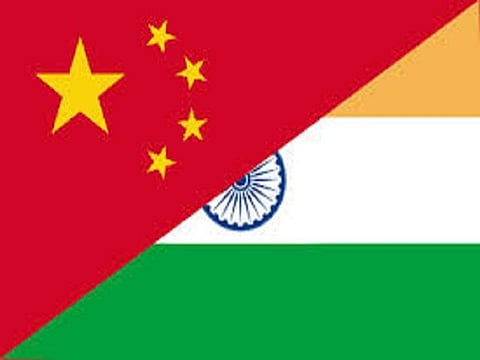
- Home
- न्यूजग्राम
- NewsGram USA
- India
- World
- Politics
- Entertainment
- Culture
- Lifestyle
- Economy
- Sports
- Sp. Coverage
- Misc.
- NewsGram Exclusive
- Jobs / Internships

By Harshmeet Singh
Over the past couple of decades, China's growing territorial aspirants in South East Asia have made as many global headlines as its swiftly growing economy. China's frequent expeditions in the Western Pacific Ocean and the South China Sea have been a sore in the eye of a number of smaller nations in the region. While China's naval adventures haven't given too much headache to the Indian Government till now, China's stand on Tibet and Arunachal Pradesh have ensured that Hindi-Chini bhai bhai slogan remains a distant realization. It is China's growing threat that has forced India to become the world's largest arms importer, with an expenditure of 2.6% (2014) of its entire GDP.
The border dilemma
For the two countries sharing the largest disputed border in the world, India and China have shown commendable restrain of violence since the 1962 war. Barring some random controversies erupting from erroneous maps and stapled visa issues, the Line of Actual Control (LAC) has seen relative peace.
Tibet – core issue for China
In 1914, the representatives from Tibet, British India and China sat down to sign an agreement in order to mark clear boundaries distinguishing India, Tibet and China. According to the Simla Convention, China was to be given control over Inner part of Tibet, while the Outer Tibet was to be recognized as an autonomous area under the Dalai Lama.
Britain, on its part, pledged to restrain itself from any interference in Dalai Lama's Tibet. But before the agreement was inked, Britain claimed Tawang (South Tibet – Now in Arunachal Pradesh), which irked China to such an extent that it boycotted the convention and the final agreement was signed only between Tibet and British India.
China, never a party to the final agreement, still claims rights over Tawang (which led to the 1962 war). After the Chinese army invaded Tibet in 1950, Dalai Lama was forced to take exile at Dharmshala, India. Due to China's growing global stature, its atrocities in Tibet have always been given a blind eye by the world leaders.
Deployment of Su-27 fighters at Tibet
China's move to station Su-27 fighters at its Tibet military base in 2013 raised quite a few eye-brows around the world. Many experts considered it as China's response to India stationing its Su-30MKI fighters at Tezpur in Assam. With a combat radius of close to 1,000 km, India's fighters were well equipped to strike the Mainland Chinese territories. With a growing firepower at its all weather military base in Tibet, China's threat to Indian skies can't be undermined anytime soon.
Growing bonhomie between China & Sri Lanka
A $ 1.5 billion project for the construction of the Colombo port city was awarded to the China Communications Construction Ltd. by the Rajapaksa Government before it was oust in the recent elections. With China's growing influence in the island nation getting evident, India has a lot on its plate to worry about. China's recent move to dock its nuclear submarine at the Colombo port didn't help the already delicate Indo China relations either. Sri Lanka, on its part, reiterates its 'No pro China. No pro India' stand. Though the Lankan Government's decision to halt the ongoing Colombo port city project would give some breathing space to India, a permanent solution to India's fears still remains invisible.
